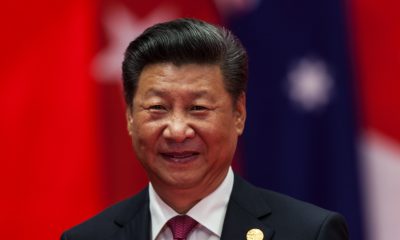China Builds Vast Military Facility As US Intelligence Tracks Beijing’s Wartime Preparations

U.S. intelligence agencies are closely monitoring a massive military complex under construction near Beijing, a site believed to serve as a new wartime command center for China’s top military leaders. The facility, spanning approximately 1,500 acres, is expected to be the largest of its kind, dwarfing the U.S. Pentagon in scale and featuring reinforced underground bunkers for high-level command operations.
Satellite imagery has revealed significant construction activity, with deep excavations suggesting the presence of extensive underground structures. Former National Geospatial-Intelligence Agency analyst Renny Babiarz noted that early assessments indicate multiple underground passageways connecting different sections of the site. “Imagery analysis suggests the construction of several possible underground facilities linked via possible underground passageways, although additional data and information is needed to more fully assess this construction,” Babiarz stated.
The project, which intelligence analysts have labeled “Beijing Military City,” began construction in mid-2024. Security restrictions around the site are reportedly strict, with military personnel blocking access to nearby areas and warning against drone flights or photography. Unlike commercial projects, there are no publicly available records of the facility, fueling speculation about its classified nature.
Dennis Wilder, former head of China analysis at the CIA, told the Financial Times that the scale and design of the facility indicate preparations for large-scale military operations, including nuclear conflict scenarios. “This new advanced underground command bunker for the military leadership, including President Xi, suggests Beijing is building a force capable of waging nuclear war at an advanced level,” Wilder said.
The facility’s construction aligns with broader efforts by China to modernize its military forces. The PLA is rapidly expanding its nuclear arsenal while improving integration between its military branches. Intelligence reports suggest that the facility could replace China’s existing Western Hills command center, which has been in operation since the Cold War but lacks the advanced security features seen in newer installations.
China’s government has not confirmed the project’s purpose. The Chinese embassy in Washington, D.C., downplayed the concerns, stating that the country remains committed to a defensive military strategy. However, the size and secrecy surrounding the facility have raised alarms in U.S. defense circles, particularly as tensions over Taiwan continue to escalate.
























